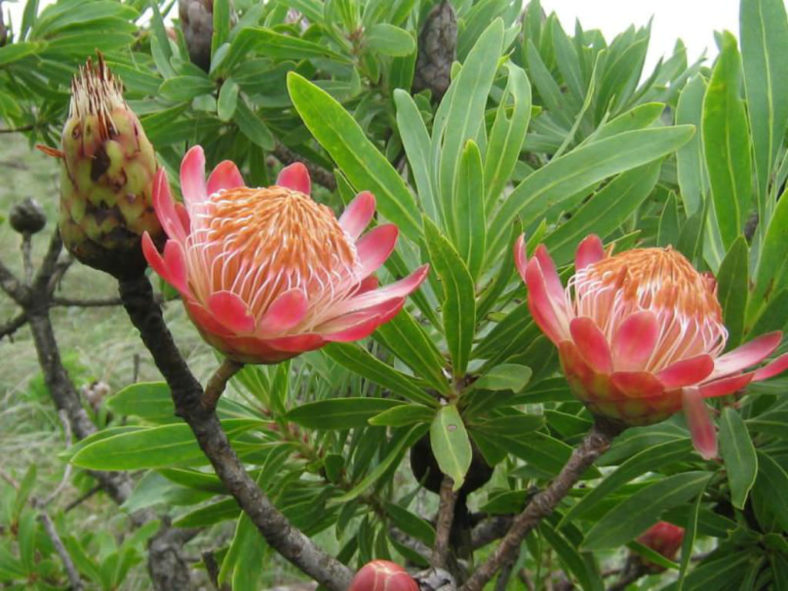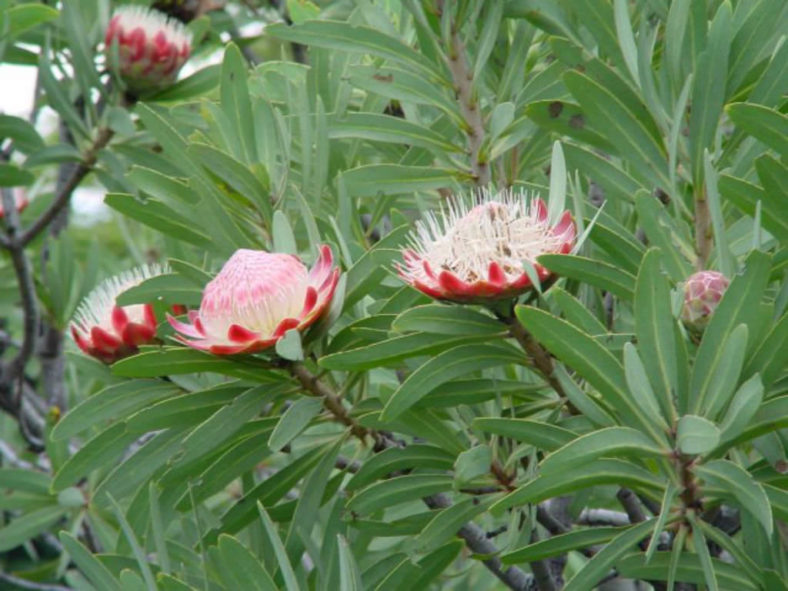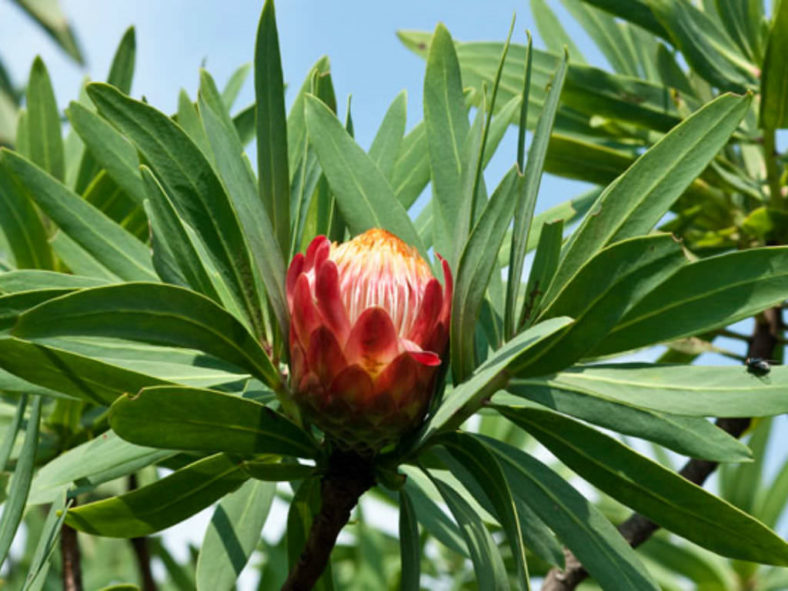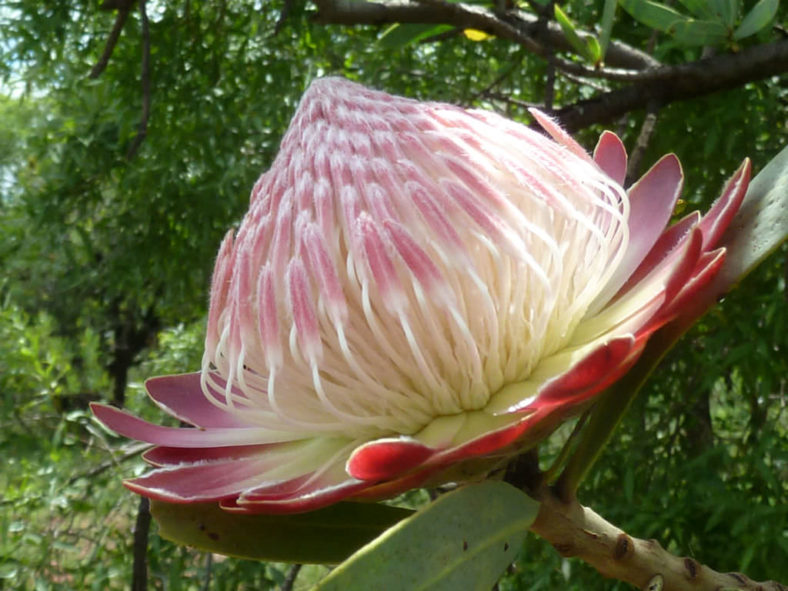Scientific Name
Protea caffra Meisn.
Common Name(s)
Sugar Bush
Synonym(s)
Protea caffra subsp. caffra, Protea bolusii, Protea multibracteata, Protea rhodantha
Scientific Classification
Family: Proteaceae
Genus: Protea
Origin
Protea caffra is native to South Africa, Lesotho, Zimbabwe, and Mozambique.
Flower
Color: Reddish to pink or cream
Bloom Time: Summer to winter
Description
Protea caffra is an evergreen shrub or small tree with a somewhat rounded crown and grows up to 10 feet (3 m) tall. The thick bark has a chunky, corky texture. Leaves are grey-green and elongated with nearly parallel sides. They are leathery in texture and can be up to 10 inches (25 cm) long.
The flower heads can be borne singly or in clusters. They reach up to 3.2 inches (8 cm) in diameter, with the outer bracts varying from reddish to pink or cream-colored. Many tiny single flowers are clustered together in a flower head. When pollinated, each flower forms a small nut covered in rich reddish-brown hairs.

Hardiness
USDA hardiness zone 8a to 11b: from 10 °F (−12.2 °C) to 50 °F (+10 °C).
How to Grow and Care
Proteas are often seen as temperamental and difficult plants to grow, but the truth is that they are relatively easy as long as you follow a few simple rules.
Most Proteas prefer well-drained and acidic soils, and we suggest avoiding heavy clay soils, as they need good drainage for healthy root growth. However, if you have a garden with heavy or clay soil, consider improving the drainage by using a free-draining garden mix and creating a raised garden bed (minimum height 12 to 18 inches / 30 to 45 cm) or installing underground drainage pipes.
We recommended planting in autumn or spring, allowing the Proteas to absorb as much sun as possible. For best results, allow plenty of space between plants for air to circulate and avoid planting any Proteas deeper than the surface level in the pot.
We suggest avoiding any fertilizer when planting Proteas because they have a specially adapted system of fine roots (called proteoid roots), which will develop naturally to seek out available nutrients in the soil.
See more at How to Grow and Care for Proteas.
Links
- Back to genus Protea
- Plantpedia: Browse flowering plants by Scientific Name, Common Name, Genus, Family, USDA Hardiness Zone, or Origin
Photo Gallery
Click on a photo to see a larger version.




